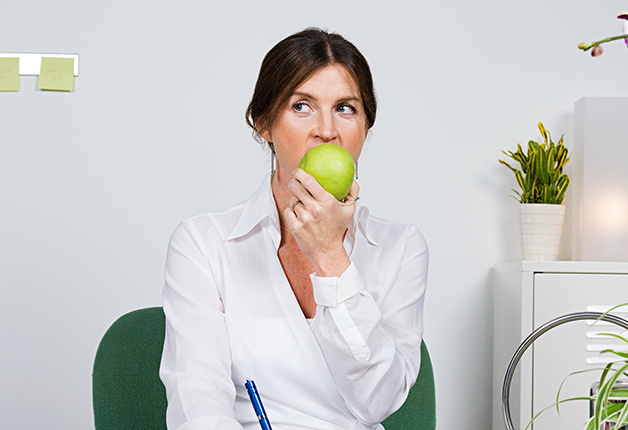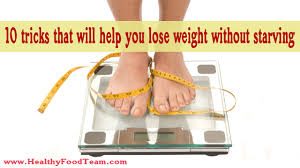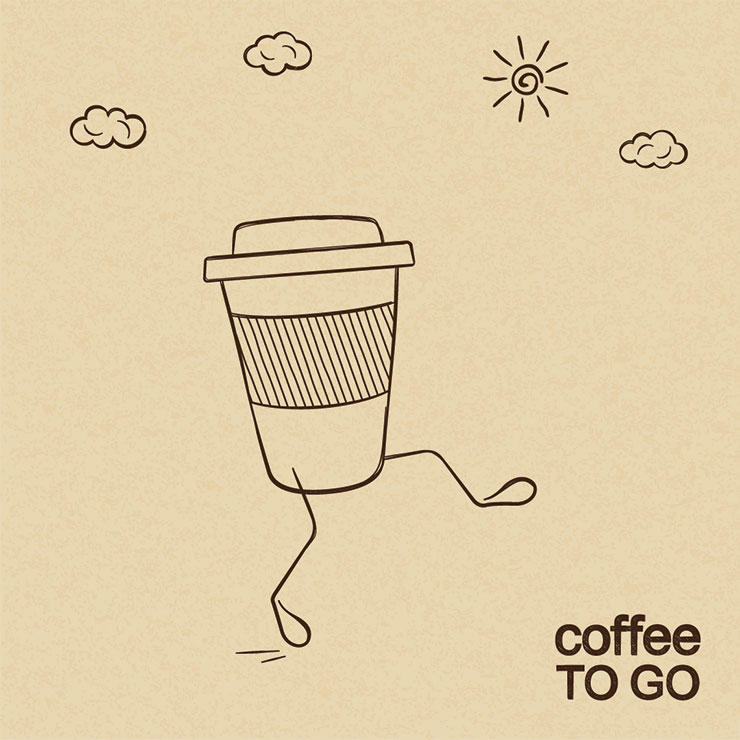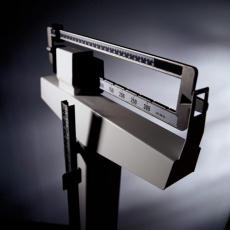Restaurants are setting you up to fail: Low-calorie dishes can have boatloads of sodium. Even savory dishes like ribs can pack almost 100 grams of sugar. And now a recent study shows that a full 92% of restaurant entrées across the country have almost as many calories as an average adult should eat in one day—a whopping 1,205 calories.
But you can beat the odds. Here's how savvy nutritionists dine out without overdoing it. (Take back control of your eating—and lose weight in the process—with our 21-Day Challenge!)
Break it up early.
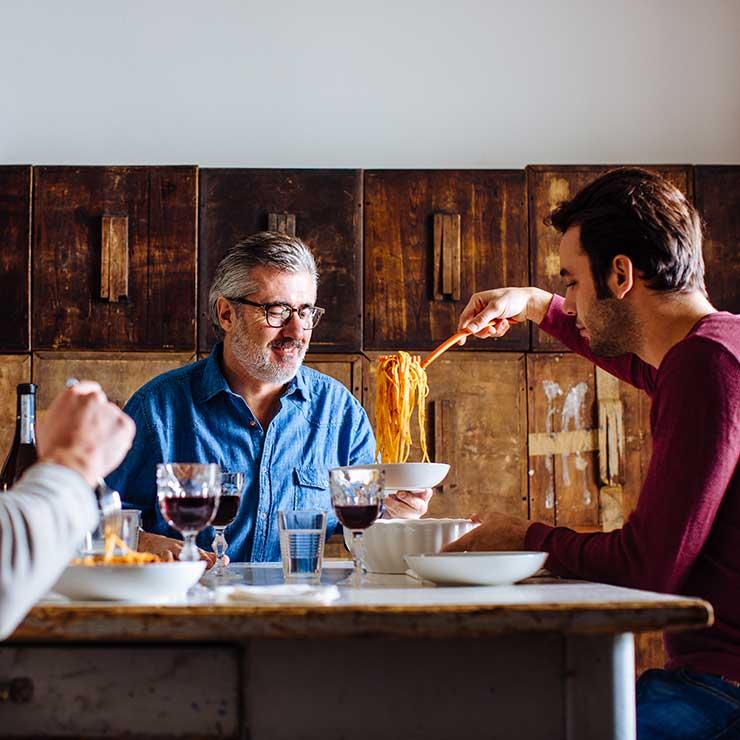 2/8
Break it up early.
2/8
Break it up early.
You say you're only going to eat half of that pasta dish—but it gets a lot harder to stop shoveling it in once the plate is sitting in front of you. "Instead, practice portion control from the point you order, not when it's in front of you," says Hope Warshaw, RD, a dietitian and author of Eat Out, Eat Well: The Guide to Eating Healthy in Any Restaurant. Ask your server to bring half the meal already boxed up in a takeout container when you place your order—not at the end of the meal.
Veggie load—but not for the reason you think
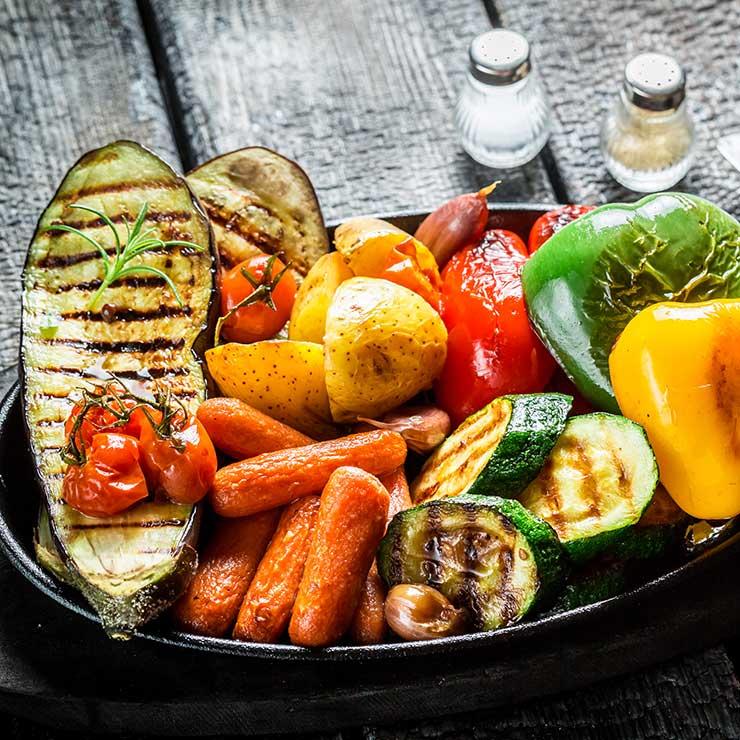 3/8
Veggie load—but not for the reason you think
3/8
Veggie load—but not for the reason you think
You already know veggies are low in calories but high in nutrients—that's reason enough to order veggies for both of your side dishes. But there's another reason to load up on vegetables when you're eating out: taste. "Here is an opportunity to indulge in vegetables prepared by a chef," says Nyree Dardarian, MS, RD, an assistant clinical professor of nutrition at Drexel University. "They will not taste like your at-home, steamable bag of broccoli—trust me. And even if they are cooked with more oil than you'd use at home, the calories will be less than any other side dish on the menu."
Have your cake...
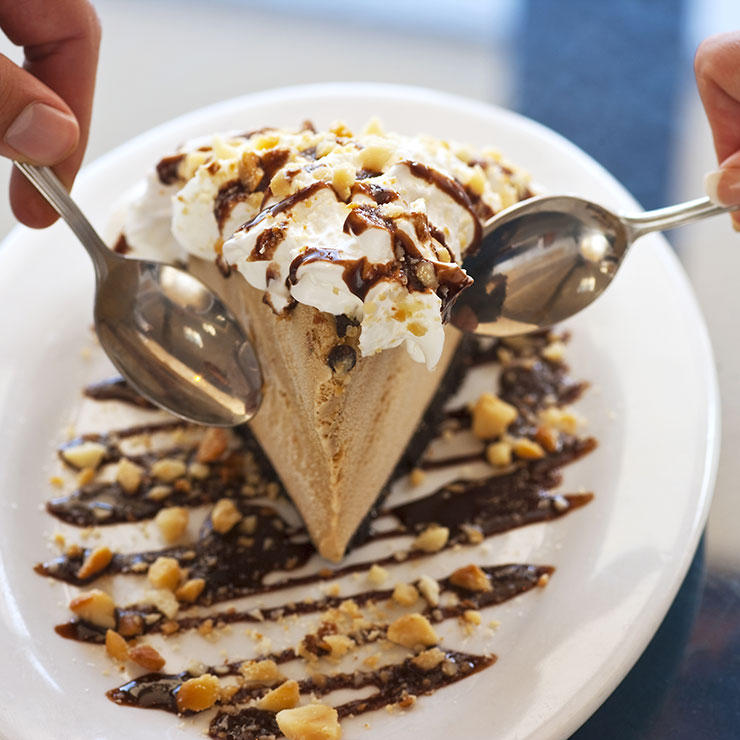 4/8
Have your cake...
4/8
Have your cake...
...But only if you really want it. "Don't eat dessert unless every morsel is delectable," Warshaw says. If the restaurant is only offering cheesecake and you're more of an apple crisp person, don't order the cheesecake—it won't really satisfy you and you'll risk feeling guilty afterward. Also, make sure you're still splitting dessert with a pal. Usually, you only need those few bites to conquer your sweet tooth. And if no one at the table is willing to split? "Ask if there are any desserts available from the tasting menu," says Frances Largeman-Roth, RDN, author of Eating in Color. "Multi-course tasting menus at fine dining establishments generally offer small portions of the restaurant's signature desserts. These smaller desserts won't be listed on the menu, but if you're supernice to your server, they just might get their hands on one for you."
Slurp soup.
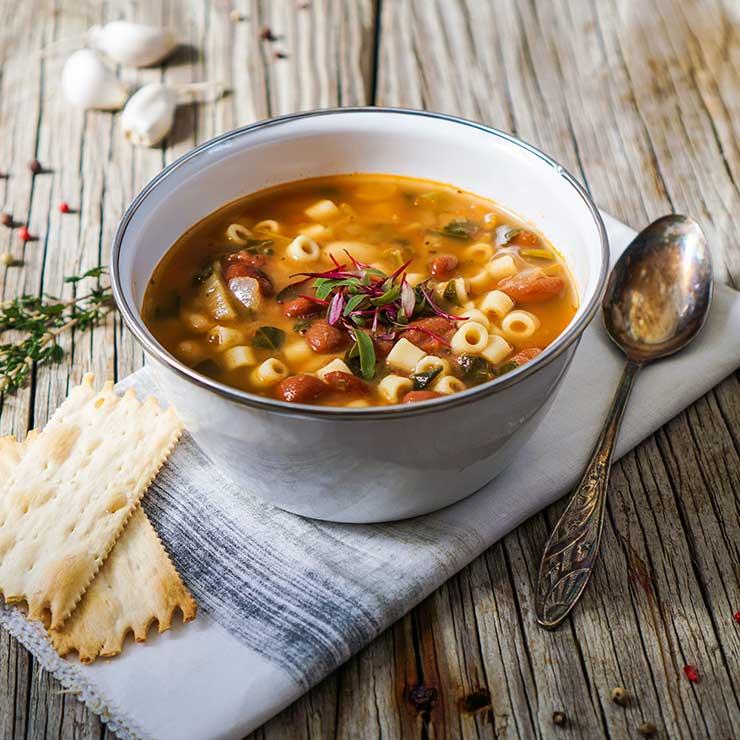 5/8
Slurp soup.
5/8
Slurp soup.
One study from Pennsylvania State University found that those who started with a broth-based soup ate 20% fewer calories during lunch than non-soup eaters. Plus, compared with traditional appetizers, soup offers big calorie savings: A cup of the average miso soup has less than 100 calories (sometimes as low as 50!). A dinner roll, by comparison, has around 150 calories, and just 14 measly tortilla chips have about 300 calories—that's before you add butter to the roll or scoop guac with the chips!
Switch sides.
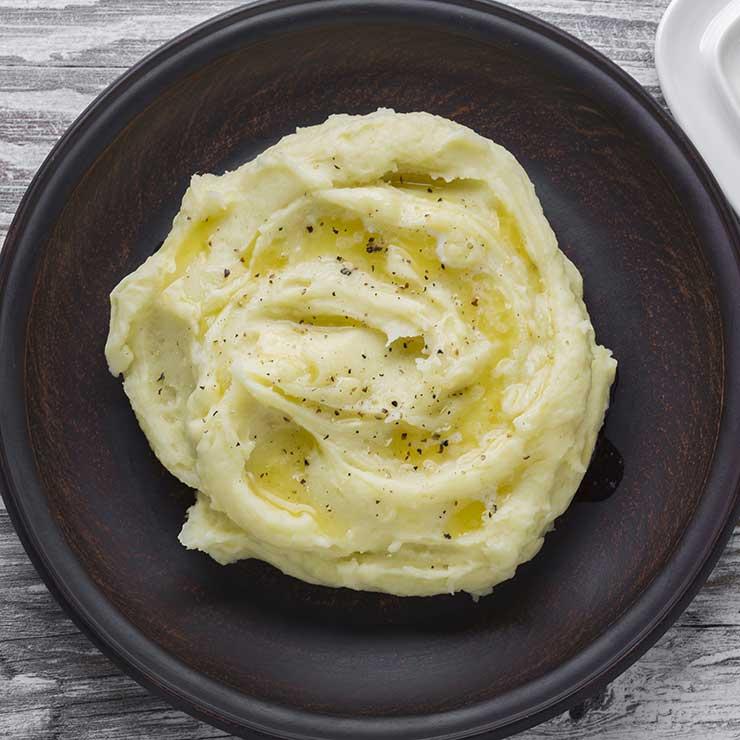 6/8
Switch sides.
6/8
Switch sides.
Often it's not the main element of the meal that's the problem—it's the sides. A 6 oz grilled chicken breast has just 260 calories. Two eggs over easy have just 180. But that mound of hash browns or mashed potatoes on the side? Those can add well over 400 calories to your meal. So always ask to swap out heavy, starchy sides, says Georgie Fear, RD, author of Lean Habits for Lifelong Weight Loss. At breakfast, replace hash browns with a side of fruit, whole wheat toast, or (one of Fear's favorites) grilled tomato slices. At lunch and dinner, nix rice or mashed potatoes in favor of any veggie you can get your hands on—even if it's not on the menu, she says, it's always worth asking.
Beware of sneaky butter.
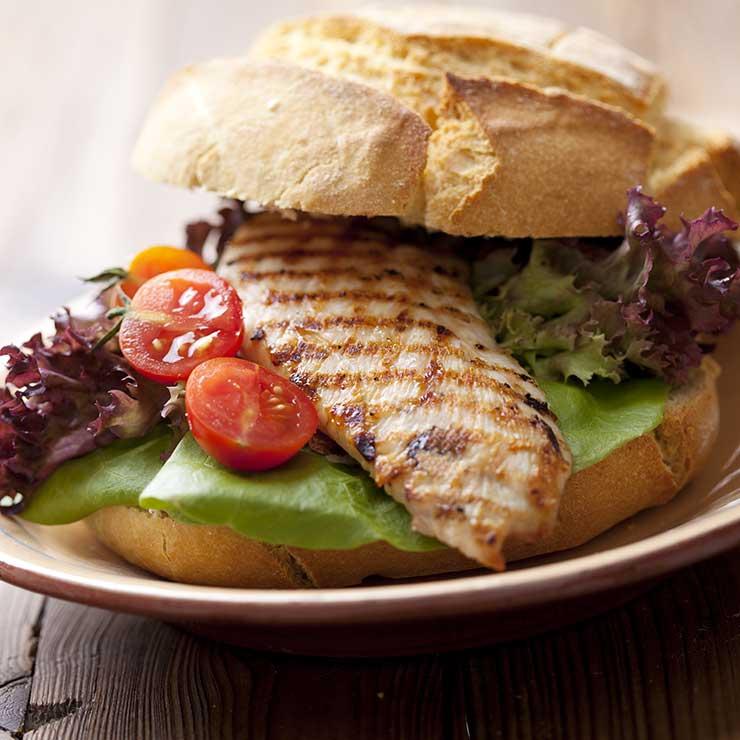 7/8
Beware of sneaky butter.
7/8
Beware of sneaky butter.
Many restaurants douse proteins—chicken breast, steak, fish—with a hefty slathering of butter. "A grilled chicken sandwich sounds like a healthy option, but once the chicken is buttered, it ends up being more calorically dense than expected," says Gina Hassick, RD, of Eat Well with Gina. But the fix is simple: "Just asking for your protein to be cooked without butter can save you significant calories and fat, without leaving you feeling like you got less food," Fear says.
Hydrate, hydrate, hydrate.
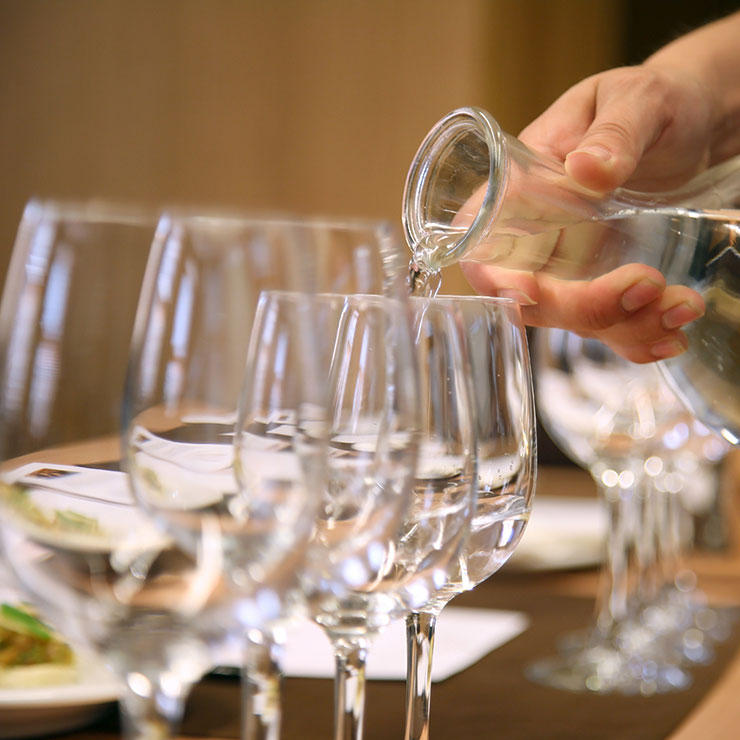 8/8
Hydrate, hydrate, hydrate.
8/8
Hydrate, hydrate, hydrate.
Restaurants will dole out as much tap water as you want for no charge—so take advantage of that. Research shows that drinking water before meals can help you fill up, eat less, and lose weight. (Plus, Dardarian explains, most of us are short on water anyway, and even slight dehydration can lead to fatigue and cravings.) Don't think that zero-calorie diet drinks will work in water's place, though: A recent study showed that people who drank water with lunch lost more weight than people who drank diet soda—even though both groups had access to the same foods.
- Prev:7 Things That Only Someone Trying To Lose Weight Over 40 Understands
- Next:19 Ways To Really, Finally Keep The Weight Off For Good
 2/8
Break it up early.
2/8
Break it up early.
 3/8
Veggie load—but not for the reason you think
3/8
Veggie load—but not for the reason you think
 4/8
Have your cake...
4/8
Have your cake...
 5/8
Slurp soup.
5/8
Slurp soup.
 6/8
Switch sides.
6/8
Switch sides.
 7/8
Beware of sneaky butter.
7/8
Beware of sneaky butter.
 8/8
Hydrate, hydrate, hydrate.
8/8
Hydrate, hydrate, hydrate.
